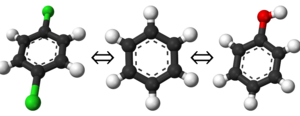Analyzing Simulation Results
| Free Energy Fundamentals |
|---|
 |
|
Methods of Free Energy Simulations
|
| Free Energy How-to's |
|---|
 |
Once you have setup your you transformation pathway, defined necessary intermediate states, run your equilibrium simulation, and acquired the correct data from the runs, you may now analyze the data to get free energies. Each of the free energy techniques discussed in the theory section of these fundamentals talks about how you get the free energies, but will also be recapped here. This page also talks about how you can get uncertainty estimates with the bootstrap method.
Calculating Free Energies
Shown below is a brief summary of the information needed and the method to calculating free energy with the various techniques. If you have read the pages for the free energy techniques, this will be a recap.
- EXP is a very straightforward calculation. You will need the [math]\displaystyle{ \Delta U }[/math] from a given pair of states. From thre, you can calculate the free energy from the effective sample size found by correcting for correlation/subsampling. Variances will be additive,
- TI needs [math]\displaystyle{ \frac{dU}{d\lambda} }[/math] and the average at each of [math]\displaystyle{ K }[/math] states needs calculated. Since its more common to have discrete [math]\displaystyle{ \lambda }[/math] states, you will need to choose an appropriate weighting method to correctly calculate it the free energy from the uncorrelated/subsampled data. By-state Variance will not be additive, but this is simple to account for.
- WHAM requires binning all your results then calculating [math]\displaystyle{ \Delta U }[/math] from all states. It is highly recommended that you take advantage of the tools already out there for calculating WHAM instead of writing your own. There is no direct way to calculate variance, and so methods such at bootstrap sampling are needed.
- BAR requires the [math]\displaystyle{ \Delta U }[/math] from two states. An iterative, often numeric, solution is needed to find the free energy, but this is relatively straightforward and can be done for each pair of states. The variance does not have as simple a relationship as with TI, and methods such as bootstrap sampling are recommended. There is a Python implementation of BAR available with PyMBAR.
- MBAR also requires [math]\displaystyle{ \Delta U }[/math], but it needs it for all combination of states. Again, an iterative set of solutions is needed and it is not recommended that users attempt to code MBAR themselves. Instead, please take advantage of a Python implementation available called PyMBAR. Error estimates are directly available with MBAR, however, it can still benefit from methods such as bootstrap sampling.
Bootstrap Sampling
Bootstrap sampling is a statistical tool in when we can get decent estimates for the uncertainty with very limited data.[1]
References
- ↑ Efron, B., and Tibshirani, R. J. An Introduction to the Bootstrap; Chapman and Hall/CRC:Boca Raton, FL, 1993. - Find at Cite-U-Like